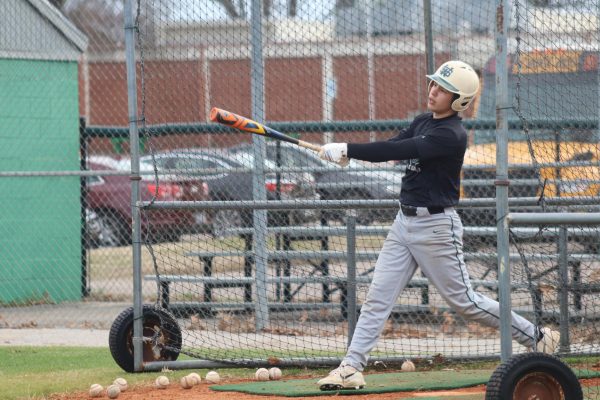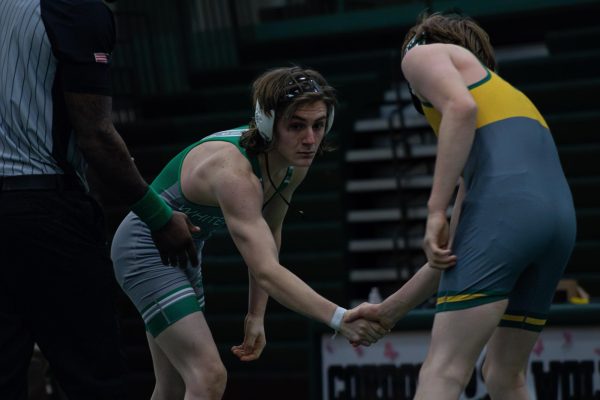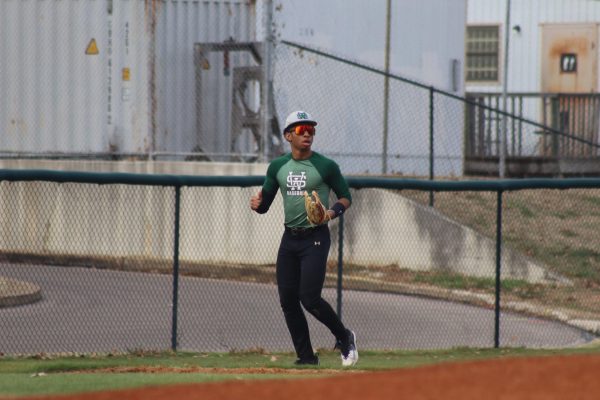The evolution of high school sports
While the individuals participating in sports have changed over time, the fundamental essence of sports has not changed. They bring neighbors, families and student bodies together for one goal: to celebrate. Sports games in America are important cultural events not only for professional players, but also for teens in school. Since White Station High opened in 1851, its reputation for academics has often overshadowed the sports programs, but the school spirit was maintained by students attending sporting events.
“We went to everything,” basketball coach Quinton Johnson said.“All [of the] sporting events were packed. That is why I am so passionate about restoring the pride and spirit that used to flow through these halls.”
In the years following the pandemic, attendance at games has decreased dramatically. The isolation caused many students to lose their interest in their schoolwork while also encouraging them to stay indoors.
“We actually enjoyed being outside and active,” Johnson said. “We did not mind going out and getting our hands dirty to pass time … we were also a very competitive generation.”
On average, children only spend around 30 minutes outside each day. In the early 2000s, it was more common for students to spend time outside which benefitted physical and mental health.
Both Johnson and track coach Kevaughn Griffith played multiple sports throughout their high school careers and spent several hours each day attending practices.
“In my case … I [was] checked in to study hall at 2:30 [p.m.] and I [would] probably have about an … hour and a half to get started on some work and then practice for two hours,” Griffith said. “By the time I get home, shower [and] get something to eat, it’s probably 8:00 [p.m.] … That’s when I’m starting my homework, whereas my non athletic counterpart has already done five hours of homework and they can be in bed, going to sleep by 9:00 [p.m.] if they’d like to.”
Student athletes today have to face the same challenges of managing their time. However, in today’s society, many students find it difficult to balance their schedule because of social media and other forms of entertainment that can be distracting. Modern technology also changed the mentality of young athletes because they could suddenly see how everyone was competing on a global stage.
“Sport has changed in that way where it’s just the increase of access [and] also the process of growing as an athlete,” Griffith said. “So many young athletes can see so much about more experienced athletes and they think that they can jump to this level because they can see it. What they don’t see a lot of the time [and] the years and years of work behind the scenes … off camera that those higher level athletes put in.”
This exposure causes many athletes to become burnt out because they expect to be competing at the caliber of professional athletes. In the past, teams would only compete regionally, meaning the competition was limited. Team members would often compete against each other, which helped strengthen the bonds between them.
“There is a higher optics of competition because we’re no longer comparing ourselves to the kid down the street,” Griffith said. “We’re comparing ourselves to … the [entire] country and even the world … I think it’s hard to … go out there and sweat alongside people day in and day out and not end up caring about them and especially since what you do as a student athlete is different.”
For both Johnson and Griffith, the relationships formed during their experiences in high school sports are still maintained today in their workplace. The current lifetime wellness instructor, Jesus Patino, was the basketball coach when they both competed. Griffith also joined the track team his freshman year while Johnson was running as a senior.
“My relationship with my coaches felt more like father-son relationships more than anything,” Johnson said. “I can call them today and talk about anything. I actually still work under my basketball coach now.”
Griffith aims to have a similar influence on his students and believes that this is one of the primary reasons for his return to White Station.
“For the students that are coming through now, knowing how much of an impact my four years here had on my life and my upbringing [makes me] love being able to do it,” Griffith said. “I’m [also] very grateful for the role that athletics … plays in my life now as a coach. It makes what I do on a day-to-day basis a lot more enjoyable.”
Your donation will support the student journalists of White Station High School. Your contribution will allow us to purchase equipment and cover our annual website hosting costs.





































